https://www.youtube.com/watch?v=0l0ZtoWgOB0
Jakarta EE vs J2EE vs Java EE _ Are you Confused
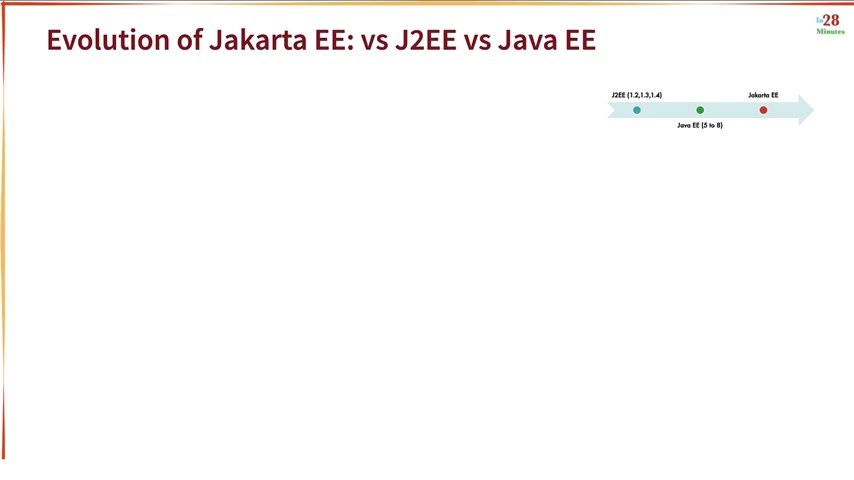
In this step , let's get a big picture around the evolution of J two E or Jawa Ee or Jakarta Ee .
There are a wide range of terms which are used to refer to this earlier .
It was J two E in between .
It became Java E and today it's called Jakarta Ee .
What are all these ?
Let's get a brief peek into the history right now .
In the earlier versions of Java , most of the enterprise capabilities were directly built into JDK into Java development kit into the Java language .
However , over time , they were separated out , they were separated out under the umbrella of J two Ee or the Java two platform enterprise edition .
So things like serves things like J SPS EJ BS .
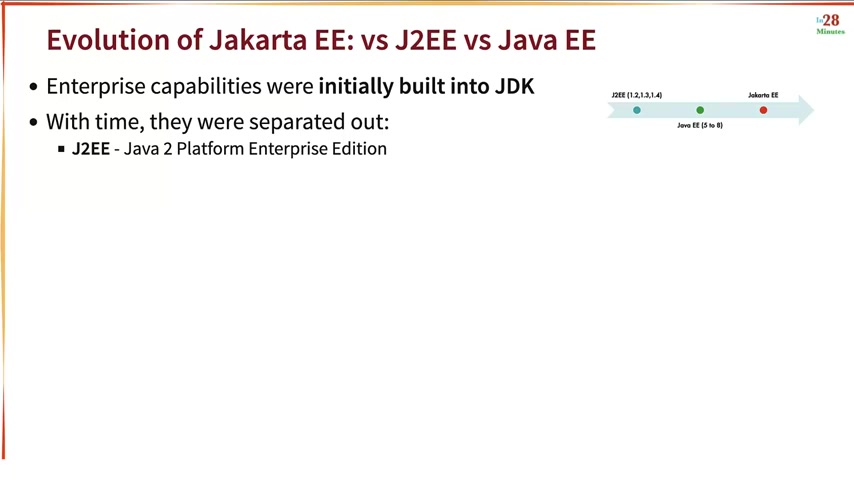
All the standards around these were created under a new umbrella called J two Ee or the Java two platform enterprise edition .
These were separated out from the JDK or the Java Development kit .
And over time J two E became Java Ee .
This was a rebranding which was done where J two E was renamed to Java Ee or the Java platform enterprise edition .
And over time it became Jakarta Ee oracle was the owner of Java Ee and Oracle gave Java Ee rights to Eclipse Foundation and Eclipse Foundation connected a pole and they renamed Java Ee to Jakarta .
Ee .
So what we are talking about is the evolution of Jakarta .
Ee .
It started out as J two ee , the initial versions were 1.21 0.31 0.8 .
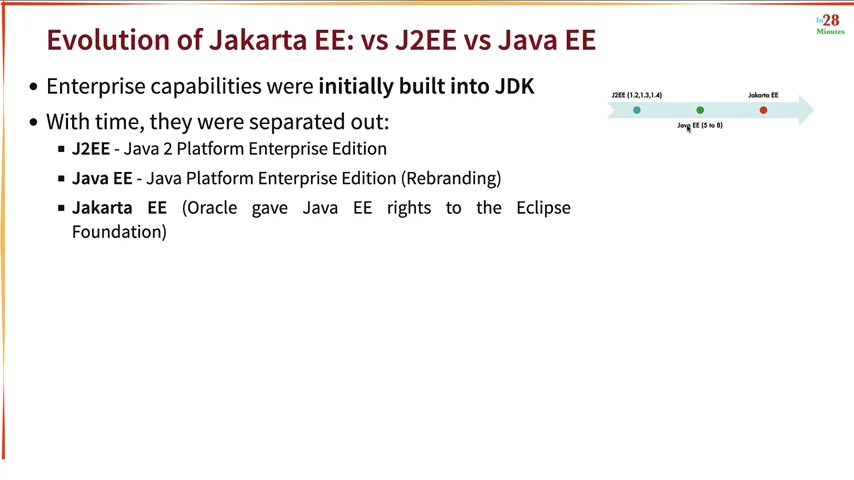
And over a period of time , it became Java Ee .
There were Java Ee versions 5678 and today we call it Jakarta ee , there are a lot of versions of Jakarta , E as well .
What are the things that are specified as part of Jakarta ?
Ee today , number one is Jakarta server pages .
Earlier , this was called Java server pages .
Now it is called Jakarta server pages .
This is JSP J SPS are used to create views in your web applications .
Next Jakarta standard tag library .
This was earlier called Java standard tag library or JSTL enough .
It's Jakarta standard tag library .
These are a set of tag libraries which can be used to show dynamic information in your web pages .
You also have EJ BS , these are now called Jakarta enterprise beans .
You also have specifications for how to build a rest web service .
This is what is called SRS or Jakarta .
Restful web services specification .
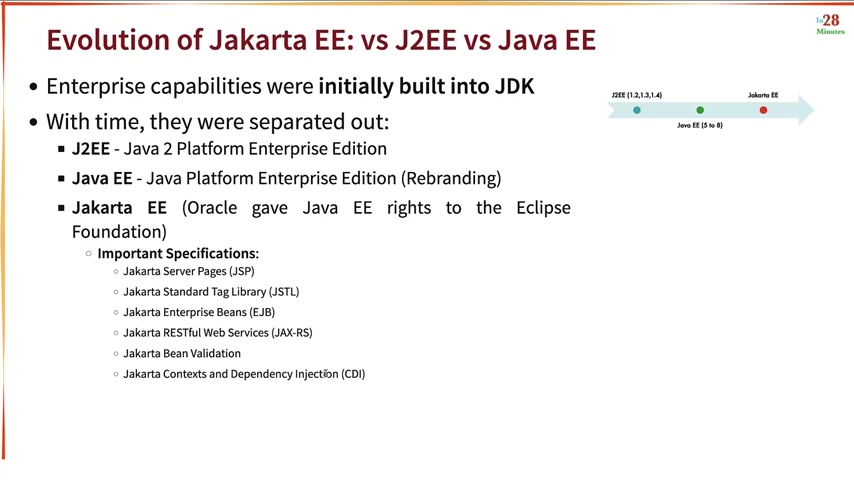
You also have bean validation specifications which are part of this and you also have CD I Jakarta context and dependency injection specification .
This is the API for dependency injection the first version of Spring framework was introduced in 2004 .
And as Spring framework got popular , the concept of dependency injection also became really , really popular .
And that's where CD A was introduced .
This is a specification around how you can do dependency injection .
Another important specification is JP A Jakarta persistence .
API This deals with how you can interact with your relational databases .
The great thing is Jakarta , E is now supported by spring six and spring boot three .
And that's why you would see that in a lot of classes .
Right now , we are making use of Jakarta dot star packages .
Earlier , we used to make use of Java X dot Star packages .
Now we are making use of Jakarta dot Star packages .
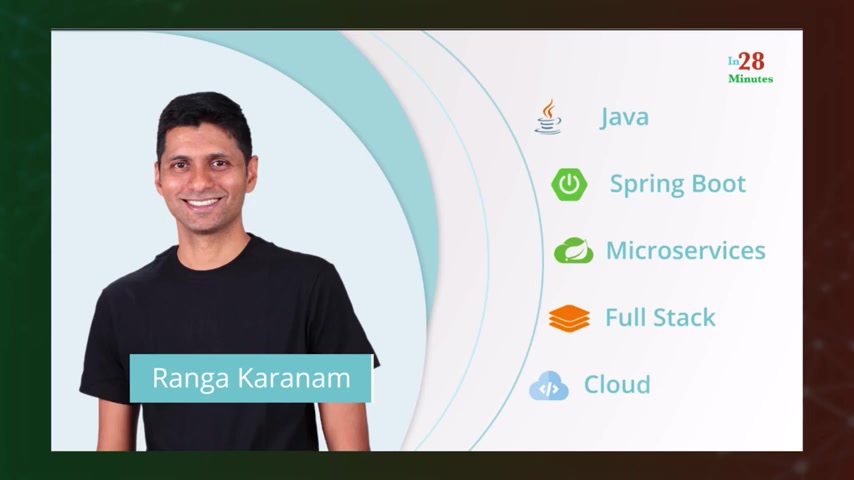
You don't really need to understand every bit of what we have discussed in here at a high level .
The important thing that you need to remember is that whether we are talking about J two E or Java or Jakarta , E , we are absolutely talking about the same thing and the important thing to remember about Jakarta , E or J two E or Java , E is that these are just a group of specifications , jspjstle JB CD , I and JP A are good examples as far as spring framework six is concerned and Springbok three are concerned they support Jakarta Ee and that's why we are making use of Jakarta dot star packages .
In most of the examples in this specific course , I'm sure you're having a wonderful time and I'll see you in the next step .
I'm sure you had a great time watching this video .
Think about this for a minute .
What are the different things ?
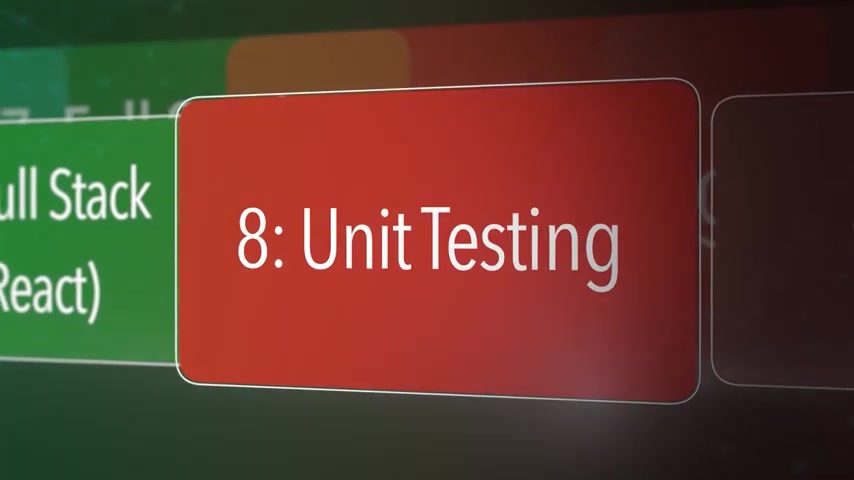
You should learn to be a great spring and spring boot developer , the fundamentals of spring framework , spring boot hibernate GPA and various spring modules out there and learning to build a variety of applications , a web application ASAP , I maybe a full stack application with React .
In addition , you'd also want to learn unit testing .
And after that , you'd want to learn how to containerize all these kind of applications with Docker .
And how about deploying these applications to the cloud ?
Let's pick up aws the number one cloud platform today .
Do you think this is a great road map for Java learners to follow ?
What if you can learn all these things in just one course ?
Yep , that's true .
All these in just one course .
Wouldn't it be awesome ?
Wouldn't it be a dream come true ?
Thousands of learners are already learning from this amazing course .
You can join them right now .
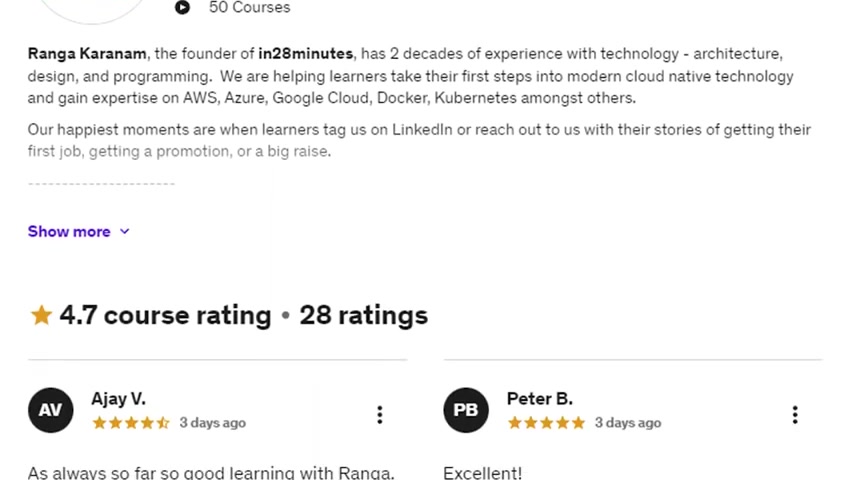
You can find a link to the course on our website www dot in 28 minutes dot com .
Keep learning every day .
Keep learning in 28 minutes until I see you again .
Here's bye from Ranga at in 28 minutes .
Are you looking for a way to reach a wider audience and get more views on your videos?
Our innovative video to text transcribing service can help you do just that.
We provide accurate transcriptions of your videos along with visual content that will help you attract new viewers and keep them engaged. Plus, our data analytics and ad campaign tools can help you monetize your content and maximize your revenue.
Let's partner up and take your video content to the next level!
Contact us today to learn more.